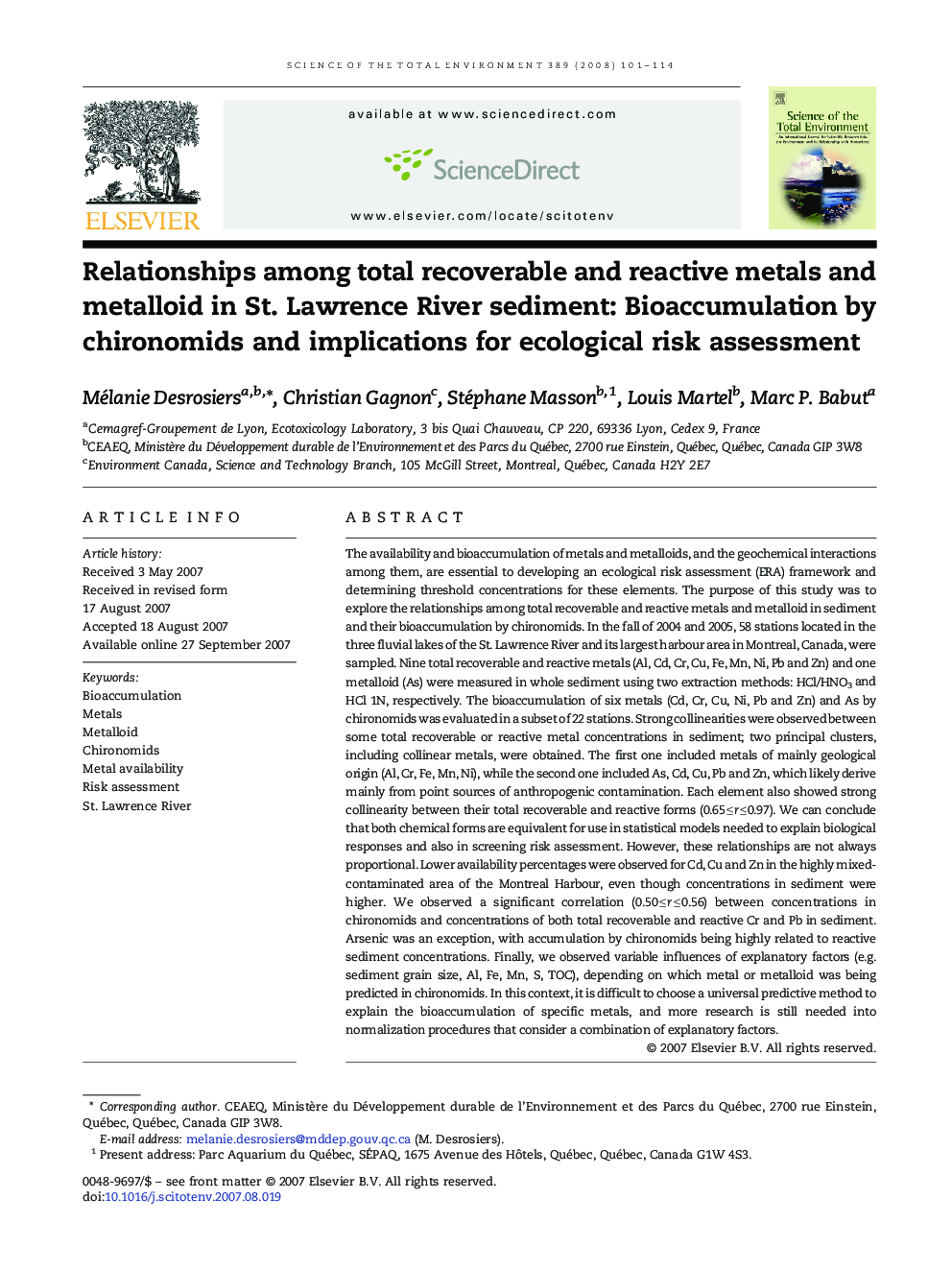| Article ID | Journal | Published Year | Pages | File Type |
|---|---|---|---|---|
| 4433115 | Science of The Total Environment | 2008 | 14 Pages |
The availability and bioaccumulation of metals and metalloids, and the geochemical interactions among them, are essential to developing an ecological risk assessment (ERA) framework and determining threshold concentrations for these elements. The purpose of this study was to explore the relationships among total recoverable and reactive metals and metalloid in sediment and their bioaccumulation by chironomids. In the fall of 2004 and 2005, 58 stations located in the three fluvial lakes of the St. Lawrence River and its largest harbour area in Montreal, Canada, were sampled. Nine total recoverable and reactive metals (Al, Cd, Cr, Cu, Fe, Mn, Ni, Pb and Zn) and one metalloid (As) were measured in whole sediment using two extraction methods: HCl/HNO3 and HCl 1N, respectively. The bioaccumulation of six metals (Cd, Cr, Cu, Ni, Pb and Zn) and As by chironomids was evaluated in a subset of 22 stations. Strong collinearities were observed between some total recoverable or reactive metal concentrations in sediment; two principal clusters, including collinear metals, were obtained. The first one included metals of mainly geological origin (Al, Cr, Fe, Mn, Ni), while the second one included As, Cd, Cu, Pb and Zn, which likely derive mainly from point sources of anthropogenic contamination. Each element also showed strong collinearity between their total recoverable and reactive forms (0.65 ≤ r ≤ 0.97). We can conclude that both chemical forms are equivalent for use in statistical models needed to explain biological responses and also in screening risk assessment. However, these relationships are not always proportional. Lower availability percentages were observed for Cd, Cu and Zn in the highly mixed-contaminated area of the Montreal Harbour, even though concentrations in sediment were higher. We observed a significant correlation (0.50 ≤ r ≤ 0.56) between concentrations in chironomids and concentrations of both total recoverable and reactive Cr and Pb in sediment. Arsenic was an exception, with accumulation by chironomids being highly related to reactive sediment concentrations. Finally, we observed variable influences of explanatory factors (e.g. sediment grain size, Al, Fe, Mn, S, TOC), depending on which metal or metalloid was being predicted in chironomids. In this context, it is difficult to choose a universal predictive method to explain the bioaccumulation of specific metals, and more research is still needed into normalization procedures that consider a combination of explanatory factors.
